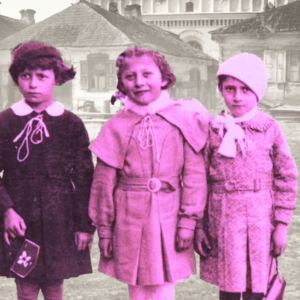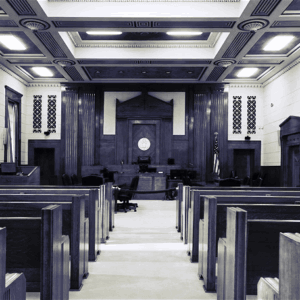
How an Irish Barman Created a Home for New York’s Literary Elite
Sharon DeBartolo Carmack on Her Family Legacy
Only in Ireland will you find an Irish pub every few buildings apart. But apparently at one time, New York City had its fair share, too. “When you’re Irish and you don’t know a soul in New York,” wrote Frank McCourt in The New Yorker, “and you’re walking along Third Avenue with trains rattling along on the El above, there’s a great comfort in discovering there’s hardly a block without an Irish bar.” One of those bars was Costello’s, owned by Tim Costello. Tim was married to Kathleen Gordon, my grandmother’s cousin.
Originally located at the corner of Third Avenue and 44th Street in Manhattan, Costello’s became a hang-out for many of New York City’s prominent writers. Tim was “a handsome, silver-haired man who wore his crumpled grey felt hat and his white button-down Brooks Brothers shirts with incomparable style,” wrote George Frazier in a 1968 Esquire article. The New York Times reported, “Among the famous writers who frequented Costello’s from time to time were John McNulty…, Ernest Hemingway, John Steinbeck, John O’Hara and James Thurber… Costello’s was always considered the chief East Side rival of the Artists’ and Writers’ Restaurant, called Bleek’s on West 40th Street. But many West Side writers were known to have strayed.”
Faith McNulty wrote in the preface to her husband John McNulty’s book, This Place on Third Avenue:
What made Costello’s different from other Irish saloons stemmed from Tim himself, whose presence had somehow made the place into a salon as well as a saloon. He often worked behind the bar, with a white apron tied with strings about his middle. He was a big upright man from Ireland with shrewd blue eyes and a mouth that tended to be slightly pursed. It was the expression of a man who sees everything but withholds comment. When he was amused his smile went wide, his eyes sparkled under bushy eyebrows, and he would polish the glass he was drying even more vigorously. He was a man of dignity and pride who disliked anything phony, especially phony Irishmen.
Frank McCourt, author of the bestselling Angela’s Ashes, claimed, “It was Tim Costello who told me to get out of his bar and walk a few blocks to where I’d see two lions, and to go in there and get myself a library card. I did what he told me because he was ferocious and I was a timid newcomer to New York in the early 1950’s….”
Biographer Harrison Kinney in James Thurber: His Life and Times said it was Tim’s “charm and esteem for artists and writers” that made the bar so popular. Kinney continued, “Costello had emigrated from Ireland with little education, but he was well informed, dressed in fine style, and…was sensitive to all nuances of the English language. He was no run-of-the-mill publican; he was apt to leave unattended an artist whose works he didn’t particularly like. Costello communicated his literary preferences much in the manner of a professor conducting a seminar.”
Frazier added in Esquire, Tim’s “judgments were so shrewd, in fact, so illuminating, so absolutely right, that there were those New Yorker writers who considered it unthinkable to hand in their manuscripts to the magazine before getting his approval.”
In 2013, while I was teaching an online graduate class in creative nonfiction writing for Southern New Hampshire University, I mentioned to my students Costello’s and my connection to it. One student, Paul Seward, emailed me that his parents used to frequent Costello’s in the 1950s and 1960s and they had become friends with Tim. Paul said that despite Tim’s minimal education, “he was a self-taught expert on Samuel Johnson and known for that among the writers who frequented the place.”
 Norma Stephenson and Tim Costello. Used with permission of Paul Seward.
Norma Stephenson and Tim Costello. Used with permission of Paul Seward.
Tim became famous with writers because of his love of literature and with the public by virtue of his personality and the company he kept. But exactly when Tim opened his saloon is uncertain. Many articles state it opened in 1929 as a speakeasy, but that probably comes from a misunderstanding of something Tim said that was included in McNulty’s book. In Thurber’s biography, Kinney wrote that Tim opened the place in 1934, which was a year after Prohibition was repealed. In 1932, when Tim came back from a visit to Ireland, his occupation on the passenger arrival list was “clerk.” On January 6, 1933, when he petitioned for U.S. citizenship, he worked as a chauffeur. Opening the bar/restaurant in 1934 seems more probable than in 1929. The earliest record I’ve found documenting Tim as the proprietor/bartender of a bar-room is the 1940 U.S. federal census.
But where did Tim get the money to open his saloon in 1934? Surely it’s no coincidence that his widowed mother died that same year. Neither of Tim’s parents left a will nor were their estates entered into probate, but Tim may have inherited some money and used it to seed the business. Several articles claim he opened it with his brother Joe, although I can find no historical documents tying his brother to the saloon.
*
One of the many stories Tim enjoyed telling was when writer John O’Hara came in while John Steinbeck and Ernest Hemingway were at the bar. O’Hara looked at Hemingway, who was reputed for his strength, and said Hemingway wasn’t “strong enough to break a Costello shillelagh over his head.” Tim handed Hemingway the shillelagh from the wall where it hung. Hemingway, said Tim, “holds one end in each hand, and he pulls down hard, and well, you know, it was probably 50 years old, and brittle…and he broke it. A kid could do it.”
He liked his place on Third Avenue to have the feel of a private club, and he took pride in it being the hangout for the writers of The New Yorker.
Almost every article about Tim or Costello’s mentions the cartoon murals that James Thurber, writer and cartoonist for The New Yorker, drew on one of the saloon’s walls. Legend has it that Thurber drew them to settle his bar tab. But Thurber freely drew them. Tim hired a painter to repaint the walls but forgot to tell him not to paint over Thurber’s cartoons. Thurber just redrew them. When Tim moved his restaurant and saloon next door, to 699 Third Avenue, Tim “ripped the wallboards off the walls and carried them to his new place. The Thurber drawings were by then so famous that the restaurant-keeper decided to move them upstairs. But on special occasions, they were put on public view again.”
Tim’s son, Tim Jr., took over the saloon when his father died in 1962, then sold it in 1992. After Tim Jr. sold the place, “the priceless Thurber cartoons mysteriously disappeared.” To this day, no one knows what became of them, but they are surely worth a fortune.
*
Stories abound about Costello’s and Tim. But who was this legendary Irishman behind the bar, and what was his life like before he opened the hangout that became famous for its clientele of New Yorker writers?
The son of James and Teresa (Flynn) Costello, Timothy Costello was born on September 5, 1895, in the townland of Ferbane, County Kings (now County Offaly), Ireland. Ferbane wasn’t a “castle town.” By the time of its major growth in the late 17th and early 18th centuries, castles had ceased being occupied as homes, and ownership of land had passed from native Irish to foreigners. House building then became the norm, so 19th century shops offered services that old castle towns once depended upon. Such shops and services included nail makers, coopers, shoemakers, blacksmiths, slaters, carpenters, bakers, millers, cabinetmakers, wheelwrights, seed dealers, milliners, and provision dealers. Tim’s parents owned a drapery shop. (In the days before department stores, a draper sold silk, linen, wool, and cotton goods, all known as “drapery.”)
The James Costello family of eleven resided in the same dwelling as their shop, a building comprised of four rooms. One room presumably served as the shop, another for a kitchen, and two others likely were bedrooms. The family was Roman Catholic, and both of Tim’s parents could read and write. Tim had seven siblings: Mary, Julia, Maggie, Thomas, James, and Patrick, all older than he, and one younger brother, John Joseph. In 1901, his spinster maternal aunt Margaret Flynn also lived with the family.
Nothing is recorded about Tim’s childhood or his schooling, but he likely attended a national school. In 1831, the government set up a National Board of Education and discovered that only a small population of school-age children received instruction, and those children were mostly Protestant. The launching of a national school system made education compulsory and provided education for both Protestant and Catholic children to learn in the same school, side by side. Most Irish children stayed in school until they had attained functional literacy, then they were needed at home to start earning a living and to help with farming or other occupational pursuits. Although Tim had only an eighth-grade education, he was quite literate; he read and highly regarded Samuel Johnson’s Lives of the Most Eminent English Poets. Johnson, along with Alexander Pope, were the authors Tim recommended to McCourt. And Tim, like many Irishmen, was a natural-born storyteller.
Work opportunities in Ferbane were probably limited, so Tim moved to Dublin and found work as a taxi driver, living on North Arnott Street. He found himself in trouble, however, when on November 2, 1922, he was sentenced to the Mountjoy Prison in Dublin, which had capacity for 570 people. (Mountjoy became famous a year prior to Tim’s internment, when ten members of the Irish Republican Army were incarcerated during the Irish War of Independence in 1920-21; Tim would have heard about the “The Forgotten Ten,” who went on hunger strikes and were hanged in Mountjoy Gaol.)
Tim was 27 when he was arrested, standing 5 feet 10 inches, 156 pounds, with brown hair, blue eyes, fresh complexion, and no scars or marks. He was single, could read and write, and Roman Catholic. His offense was “driving a motorcar on the public highway at a speed which was dangerous to the public.” There was no mention that alcohol was involved; in fact, Tim was not known to drink anything but tea. Tim told Frank McCourt that Samuel Johnson “drank forty cups of tea a day and his mind was clear to the end.” Tim was sentenced to serve three calendar months, to be released on February 1, 1923. He was also fined £10, which he paid when he was released.
There is no further record of him until he departed for America in 1927.
*
On April 9, 1927, 20-year-old domestic servant Kathleen Gordon and her 19-year-old brother, James Gordon, left Liverpool, England, on the Celtic and arrived at the Port of New York ten days later. Both James and Kathleen were born in Ardvarney, County Leitrim, Ireland, to parents Denis and Margaret (McNama) Gordon. Kathleen had moved to Dublin in the Blackrock area at some point before immigrating to America, and she had saved enough money to purchase both tickets. Kathleen was a wee thing, standing just 5 feet 4 inches with a fair complexion, dark hair, and gray eyes. On board that same ship was Kathleen’s future husband, Timothy Costello. He was 31 and a “motor driver.” Tim was also headed to New York City and joining his brother, [John] Joseph Costello. Joseph had arrived on the Cedric on July 12, 1926.
Tim and the Gordon siblings traveled in steerage, that part of the ship below the water line, so named for the location of the steering mechanism. This class was the least-expensive means of travel. It seems likely that Tim and Kathleen met while waiting in line to purchase tickets and then began their romance during the voyage.
Tim’s “formal education in Ireland had been scant,” wrote George Frazier, “but he read omnivorously and with great discrimination.”
Tim wasted no time in making his declaration of intention to become a US citizen in the Southern District of New York, seven months after his arrival. He had found work in New York City as a driver. But not long after he filed his declaration, he received the news of his father’s passing. James Costello died in Ferbane on November 29, 1927, from senile decay at the age of sixty-seven. I’ve found no passenger list to indicate that Tim went back to Ireland for the funeral; having just arrived in America, it’s unlikely he did.
Tim did return to Ireland in September 1932, and came back to New York on November 21, 1932, on the Laconia. Before he left, he worked as a clerk. The reason for his return home is uncertain. When he came back to the United States, he left behind in Ireland his widowed mother. That was the last time he saw her; she would die less than a year later of senile decay at age 72.
Almost six years after making his declaration, Tim filed his petition for US citizenship, indicating he worked as a chauffeur. Taking the oath of allegiance, Tim became a US citizen on June 26, 1933. Sometime between 1933 and by early 1940 he opened his saloon on Third Avenue with no apparent experience as a barkeep. Surely he had helped his father in the family drapery store and knew plenty of Irish publicans back home. But with Irish pubs flourishing in New York City, there had to be something to set his establishment apart from the others. The location near The New Yorker was certainly a factor. But more important was the presence of Tim himself.
*
Tim married his shipboard sweetheart, Kathleen Gordon, in May 1937 in New Jersey. In 1940, the Costellos resided at 170 West 164th Street in the Bronx, a place they rented for $42 a month (about $775 today). Tim was age 44 and now was the proprietor/bartender of a barroom. Kathleen, like Tim, had completed the eighth grade. They had a son, James F., who was then a year old. Kathleen gave birth to two other children, Margaret in June 1942—who lived only two days—and Timothy in March 1944.
Tim registered for the World War II draft in the Bronx on April 27, 1942, although there is no record that he served. He owned his own business called “Costello’s Chop House,” located on Third Avenue in New York City.
At age 54, he made one more trip back home to Ireland, leaving New York on July 13, 1950. Tim took with him his 11-year-old son, James. They sailed for Cobh, Ireland, on the Mauretania, and they planned to stay abroad for a month and a half. They arrived back home on September 12, 1950, traveling on the Queen Mary from Southampton, England. Both of these ships were luxury liners, and even though father and son traveled in cabin class, it indicates Tim had a thriving business and was doing quite well for himself. Tim must have led a fairly quiet life between his trip to Ireland and his death twelve years later. He didn’t generate any historical records that I’ve found during that time.
Regular customers remembered how Tim put “reserved” signs on the tables if he felt the saloon was becoming too crowded. He liked his place on Third Avenue to have the feel of a private club, and he took pride in it being the hangout for the writers of The New Yorker. Tim’s “formal education in Ireland had been scant,” wrote George Frazier, “but he read omnivorously and with great discrimination.” For a man with only an eighth education who never published a word, Tim Costello, a simple Irish barman with a love of story, certainly left his mark on the literary world.
Sharon DeBartolo Carmack
Sharon DeBartolo Carmack is the author of In Search of Maria B. Hayden: The American Medium Who Brought Spiritualism to the U.K., the forthcoming memoir, Midlife Medium: A Genealogist’s Quest to Converse with the Dead, and “How an Irish Barman Created a Home for New York’s Literary Elite” in Literary Hub.












